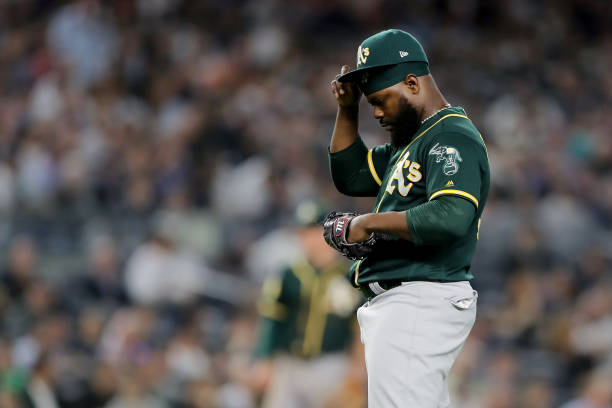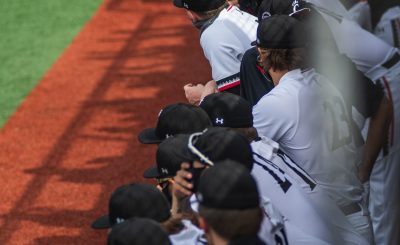And the survey says!
Oh my. Who saw that coming?
I mean, when you have a player like Aaron Judge up batting, of course something like that was bound to happen. With the pitches that came out of Fernando’s hand landing into very unfavorable spots on the strike zone, Rodney was doomed from the start. For reference, check out the two pitches Rodney threw to Judge in the at bat.

Not very good spots to throw at, huh? If you add that to the batting average Judge has when the ball comes down and inside, you’ll end up with nothing but BBQ chicken for the Yankee hitter. Take a look at this chart and see for yourselves what I’m talking about.

After Judge’s double that started the bottom half of the inning, Rodney then faced Aaron Hicks, the third batter of Yankees’ batting order who finished fifth in the AL this year with 90 walks. The first pitched Rodney threw in the at bat was a diving change-up which Hicks didn’t chase for ball one.
Thanks to prior knowledge over where Hicks is least effective in on the strike zone, Rodney prepared his first pitch to be a very very low ball, which he did. Usually, Hicks would swing and chase if the ball went low. In 2018, he ended up with 111 strikeouts, with 73 of them coming from low pitches, which accounts for nearly 66% of the total amount.

After seeing the result, he prepared for his next pitch. He let off a bit of steam, did his wind-up, and dished out a two-seamer right down the freaking middle.
Oooooooooooooohhhh noooooooooooo.
Hicks doubled again to center field which allowed Judge to run home and increase the Yankees’ lead to 3-0.
After allowing the second hit, Melvin pulled Rodney to make way for Blake Treinen to prevent any further damage.
In the end, the Athletics lost 7-2 to the Yankees, thus being eliminated from the postseason.
Many years down the road when people look back at this game, they’ll wonder about the exact time where things turned for the worse for the Athletics and why it played out as it did. They may look at starting pitcher Liam Hendricks or the Athletics offense as scapegoats–which is fair in every sense–but one must also take note of Rodney.
Yes, Hendricks did give up those first two runs to New York in the beginning of the game which was the reason why he was pulled so early, but after he left for the bullpen, they were then able to shut the Yankees out from the second inning all the way to the beginning of the sixth before Rodney came in. And yes, the Oakland bats were not able to do anything to threaten the Yankees’ pitchers. But for the Athletics to use a man who had a career ERA of 4.97 in 13 postseason games prior to pitching last night against a team that hits nothing but dingers, surely they must’ve known the dangers behind him.
Well, nearly 12 hours after it happened, now they do.
The Fernando Rodney Experience knows no bounds.





